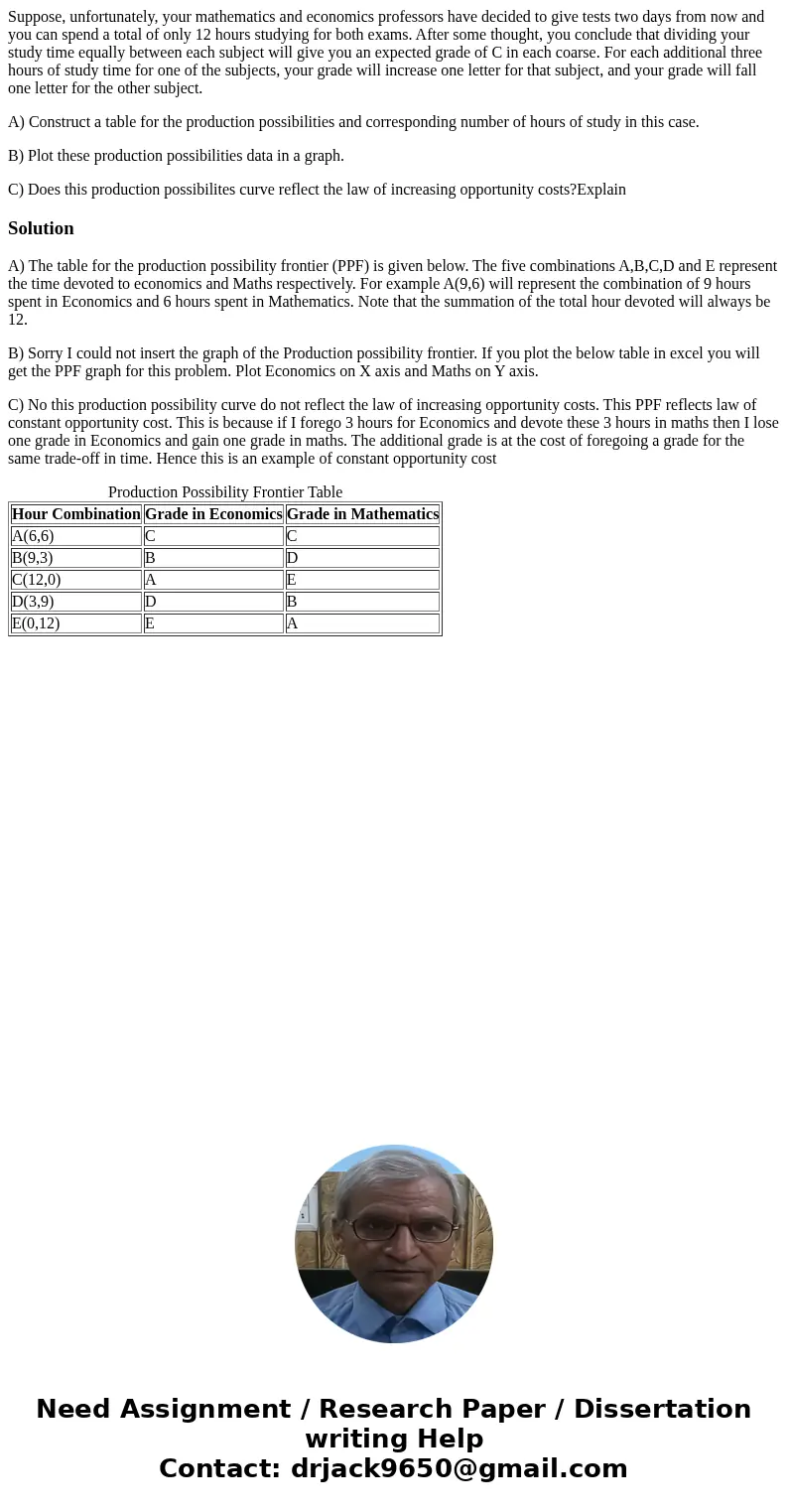Suppose unfortunately your mathematics and economics profess
Suppose, unfortunately, your mathematics and economics professors have decided to give tests two days from now and you can spend a total of only 12 hours studying for both exams. After some thought, you conclude that dividing your study time equally between each subject will give you an expected grade of C in each coarse. For each additional three hours of study time for one of the subjects, your grade will increase one letter for that subject, and your grade will fall one letter for the other subject.
A) Construct a table for the production possibilities and corresponding number of hours of study in this case.
B) Plot these production possibilities data in a graph.
C) Does this production possibilites curve reflect the law of increasing opportunity costs?Explain
Solution
A) The table for the production possibility frontier (PPF) is given below. The five combinations A,B,C,D and E represent the time devoted to economics and Maths respectively. For example A(9,6) will represent the combination of 9 hours spent in Economics and 6 hours spent in Mathematics. Note that the summation of the total hour devoted will always be 12.
B) Sorry I could not insert the graph of the Production possibility frontier. If you plot the below table in excel you will get the PPF graph for this problem. Plot Economics on X axis and Maths on Y axis.
C) No this production possibility curve do not reflect the law of increasing opportunity costs. This PPF reflects law of constant opportunity cost. This is because if I forego 3 hours for Economics and devote these 3 hours in maths then I lose one grade in Economics and gain one grade in maths. The additional grade is at the cost of foregoing a grade for the same trade-off in time. Hence this is an example of constant opportunity cost
| Hour Combination | Grade in Economics | Grade in Mathematics |
|---|---|---|
| A(6,6) | C | C |
| B(9,3) | B | D |
| C(12,0) | A | E |
| D(3,9) | D | B |
| E(0,12) | E | A |

 Homework Sourse
Homework Sourse